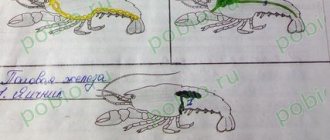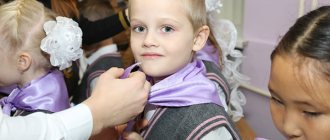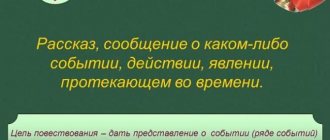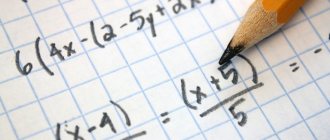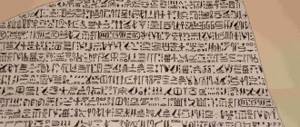Physical exercises in English for children
What is the best exercise? You should try several. After two or three lessons you will see that the children like it better. The child should smile and laugh. Remember that exercises are intended to relieve the learning environment.
We offer several options =>
- To stretch body parts:
- Hands up! Hands down!
- Hands on hips! Sit down!
- Hands up! To the sides!
- Bend left! Bend right!
- One, two, three! Hop!
- One, two, three! Stop!
- Stand still!
This warm-up requires a lot of movement. And children cannot imagine their life without movement! Young fidgets just want to run, jump, jump... Such exercises will be the ideal solution for you if children feel tired and their reaction is almost zero.
- Hands on your hips, hands on your knees,
- Put them behind you if you please.
- Touch your shoulders, touch your nose,
- Touch your ears, touch your toes.
- Stand up and show me orange!
- Hands up and show me blue!
- Clap! Clap! Show me yellow!
- Sit down. Nice of you!
- Stand up and show me blue!
- Hop! Hop! Show me red!
- Sit down. Nice of you!
- Stand up and show me grey!
- Sit down and point to the green.
- Clap! Clap! Show me pink.
- Stop! Very nice of you.
Or this:
- Hands up, clap, clap!
- Hands down, clap, clap!
- Turn yourself around and then you clap, clap!
- Bend left, clap, clap!
- Bend right, clap, clap!
- Turn yourself around and then you clap, clap!
Warm-ups should be structured in such a way that you yourself show how to do it, and the children repeat. It would be good to use video files. Let the kids look at the instructor and do the same. We recommend finding video tutorials where a funny pig or dog is presented as an instructor. These lessons are so much fun!
- For eye exercise:
A useful thing, especially if children write and read a lot. Draw a specific letter on the board, such as L, and ask the children to represent it with their eyes. A good option would be to depict the letter S. At the same time, ask the children to say a word that they know with this letter. To spark excitement, play -> who can say the most words with this letter. Children will try to say as much as possible. After all, everyone wants to be better than the other! And this, in turn, allows you to expand your vocabulary. Learning English is a breeze!
- We write letters:
Other English topics: Present simple for kids: simple explanations and interesting exercises
Not love or friendship, but letters! This means that you write some letters on the board in a random order. Children must write words with these letters. Choose to make sure that the letters you write are such that you can use them to form certain words. You can give the kids a hint -> some long street, which means road; something very tasty (cookies, cake, sweets, lollipop) etc. Get your child interested!
- Relieving eye strain:
- Look left, right
- Look up, look down
- Look around.
- Look at your nose
- Look at that rose
- Close your eyes
- Open, wink and smile.
- Your eyes are happy again.
- Exercise for the respiratory system:
Ask the children to imagine themselves as balloons of different colors. You keep count, and the kids should take a deep breath on each word. For example, one, two, three, four – four deep breaths. This is followed by the command Breath in! and children must hold their breath. Next, the count is from 4 to 8, after which comes the command Breath out! – the children take a deep breath. Great exercise at the end of the lesson.
On a note! You don't have to count to four. You can count to three, then to six, then to nine, etc. Let the children inhale and exhale, vary the numbers. There is no need to tie it to one number. Children will do everything automatically. But they need to be very attentive!
Physical education lessons in English lessons
Physical education lessons in English lessons
Physical education lessons in English lessons will help not only entertain children, but also reinforce vocabulary on various topics:
- body parts
- parts of the face
- colors
- verbs of motion
- objects in class
- food
During physical education sessions, speak and demonstrate what you say. Children should repeat all actions after you. Don't force them to repeat the words after you - it will be very difficult for them the first time. It is enough for children to understand the meaning of the actions. When this task is repeated in future lessons, the children will gradually begin to repeat the words themselves and memorization will happen naturally.
Physical education minutes are necessary in classes in which you do not plan more than one outdoor game.
Physical education minutes
for studying body parts
- Let's stand in a circle. Let's stand in a circle - Listen carefully and repeat after me. Listen carefully and repeat after me
Clap, clap, clap your hands as slowly as you can (perform and say this action very slowly) Clap, clap, clap your hands as quickly as you can (and this action is performed and say it very quickly) Tap, tap, tap your knees as slowly as you can Tap, tap, tap your knees as quickly as you can Shake, shake, shake your hips as slowly as you can Shake, shake, shake your hips as quickly as you can Stamp, stamp, stamp your feet as slowly as you can Stamp, stamp, stamp your feet as quickly as you can
After the children remember these words, increase the number of actions performed:
Tap, tap, tap your knees as slowly as you can Clap, clap, clap your hands as slowly as you can Tap, tap, tap your knees as quickly as you can Clap, clap, clap your hands as quickly as you can Shake, shake, shake your hands as slowly as you can Shake, shake, shake your hands as quickly as you can Shake, shake, shake your hips as slowly as you can Shake, shake, shake your hips as quickly as you can Rub, rub, rub your hands as slowly as you can, Rub, rub, rub your hands as quickly as you can. Stamp, stamp, stamp your feet as slowly as you can Stamp, stamp, stamp your feet as quickly as you can
This physical education session can be done to any energetic music while pronouncing words.
Clap your hands
Clap your hands - one, two, three Rub your hands - one, two, three. (the actions described in the poem are performed) Rub your hands just like me. Clap your hands just like me. Tap your knees - one, two, three. Roll your hands - one, two, three. Tap your knees just like me. Roll your hands just like me. Shake your hips - one, two, three. Shake your hands - one, two, three. Shake your hips just like me. Shake your hands just like me. Stamp your feet - one, two, three. Stamp your feet just like me.
Warm-up game for training attention
Give the children the following instructions: “Now let’s check how attentive you are. I will name parts of the body, head and face, and you must touch it on your face, head or body. Be careful: sometimes I will say one thing and show another! But you must strictly follow my instructions. For example, I can say: “Touch your nose,” while touching my mouth. To play this game, we need to remember a new word: touch - touch.”
The first time the teacher plays the role of leader, then one of the children can be assigned to the role of leader.
Touch your nose Touch your knees Touch your ears Touch your toes Touch your mouth Touch your eyes Touch your hair Touch your head Touch your shoulders
Physical education for repeating colors (touch something blue)
The teacher says to the children: Touch something blue. Children must touch any blue object in the room (you can touch something blue on another child's or teacher's clothing). Then name the next color, etc. Next, children can play the role of leader.
Note: to make physical education more interesting, you can give children a soft hammer or a long inflatable ball. with which they can touch colored objects. It's much more fun than doing things with your hand.
Physical education lesson for teaching verbs of motion
First, demonstrate the actions yourself, then say the commands and carry them out together with the children.
Jump! (jump on both legs)
Run! (run)
Hop! (jump on one leg)
Walk! (we walk around the room)
Squat! (squat down)
At first, the actions are performed at a normal pace, then the teacher commands: Quickly! - and all actions are carried out quickly. Then the command is given: Slowly! - and actions are carried out slowly.
Warm-up game for repeating the names of relatives
Place the children in a circle facing outward. Each of them gets a new role - they become a mother, or a father, or a sister, or a brother.
The teacher names one of the relatives, for example father. The one who received this role must quickly run a circle and sit back in his place.
In principle, this warm-up game can be used with any set of vocabulary.
Simon says
repetition / reinforcement of verbs of movement, as well as verbs look, touch, give, take, etc.
This game is a variation of the children's attention game Simon says, popular in the US and UK. In it, the child must perform actions only if the leader adds Simon says to his commands.
In our case, we replace these words with please (explain to the children what it means). Children who complete a command that does not contain this word are eliminated from the game. Keep 2-3 winners and reward them. One of the winners becomes the host for the next game. Repeat this game several times. In the future, such a game can be used with new actions that children will learn: jump, run, fly, hop, swim, touch (something), etc.
Instead of the word “please”, you can use other words or combinations, for example, I say, I order, etc. Thus, children will gradually be able to master several new verbs that can be used to introduce requests or orders.
Warm-up game for repeating verbs and expressions “I can”
Tell the children that you will name actions that you know how to do, and they must pretend to perform these actions.
For example, you say: I can fly! - children pretend that they are flying by saying the word fly.
At first, you may need to demonstrate the actions to the children.
When you see that children can do everything correctly without your help, you can conclude that they already recognize these words.
A rhyme to music that replaces physical education (we fix the score)
This warm-up can be done to any moderately active music. When reciting the poem, perform the appropriate actions with the children.
Teddy Bear, Teddy Bear, turn around (children turn around themselves)
Teddy Bear, Teddy Bear, touch the ground (children touch the floor)
Teddy Bear, Teddy Bear, tie your shoe (children pretend to tie their shoelaces)
Teddy Bear, Teddy Bear, how old are you? (after this question, show the children any number up to 10. They must count in English to this number)
1-2-3-4-5-6... Repeat the exercise several times, showing different numbers each time.
Warm-up game for repeating the theme “Animals”
Call one child, whisper in his ear the name of any animal familiar to the children.
The child must “show” this animal with gestures and facial expressions, but uttering any sounds is not allowed.
The child who correctly guessed the animal and named it in English will now “portray” the next animal.
Warm-up game “Direction of movement”
For this game you will need a small free area. If your classroom doesn't have desks, great. If you study in a traditional classroom with desks, you can use the free space in front of the board to play.
Call one child. Blindfold him. Place barriers, such as chairs, on the play area. If chairs cannot be moved, obstacles can be marked with pens or pencils on the floor.
The point of the game is for children to give movement instructions to a blindfolded child:
Turn right!
Stop!
Turn left!
Go straight ahead!
A blindfolded child must go around all the obstacles, following the instructions, and get from one end of the classroom to the other. Children may also give negative commands if they see a blindfolded child about to take a wrong turn:
No, don't turn right!
No, don't turn left!
The game can be repeated several times.
Physical education lesson that will help children remember the names of musical instruments
When saying the phrase 'This is the way we do it', children pretend to play the corresponding musical instrument.
We can play the big bass drum This is the way we do it.
We can play the violin This is the way we do it.
We can play the flute This is the way we do it.
We can play the piano This is the way we do it.
We can play the guitar This is the way we do it.
A similar physical education lesson can be used to study sports
. For example:
We can play football This is the way we do it
Physical education minute
, which helps you remember the words
low - high, fast - slow
, as well as several verbs of movement
Jump the rope, Jump the rope. Jump, jump, jump. (jump rope)
Jump it high, And jump it low. Jump, jump, jump. (jump higher and lower)
Jump it fast, And jump it slow. Jump, jump, jump. (jump fast and slow)
Walk tiptoe, walk tiptoe (walk on tiptoe)
Very slow, very slow. Jump, jump, jump. (jump rope on tiptoes)
Clap your hands, (clap your hands)
And stamp your feet. (stomp our feet)
Jump, jump, jump. (jump)
Jumping rope can be imitated. You can even give a prize to the person who does it best.
Best time to practice
When is it appropriate to use such activities? Physical exercise is intended to defuse the situation. The best time is in the middle of the lesson and at the end. When we take a kind of break during a lesson, the lesson becomes more effective. The kids will rest and go to battle! It is very important that classes are not “dry” and boring. Play! Invent! Jump! Sing! At the end of the lesson you also need to do a physical exercise. So that children can shake off the tension after an intensive lesson and tune in to new lessons. Remember: the child must want to study. Otherwise there will be no result. You can’t force knowledge into your head.
Other English topics: How to explain Past Simple tense to children - rules, dialogues, games
Help : if you see that the child is tired and not at all in the mood for the lesson, wake him up using the same physical exercise. Fun songs and dances will act like a cold shower, and your scheduled classes will not be disrupted. But don't overdo it! You need to study well, constant dancing and singing should be left for the GPA.
